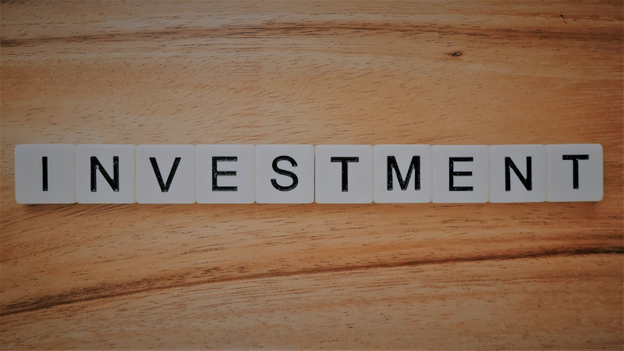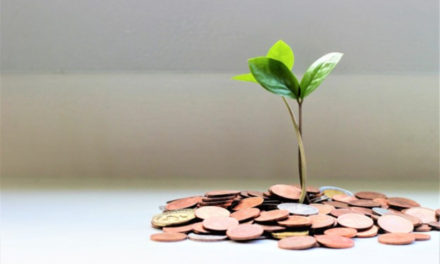I started day trading early in my career and never regretted it. Day trading helped create initial capital for my longer-term investments and eventually led to the founding of Essex Investments and a much broader role throughout the financial industry.
As a day trader, I followed a simple strategy: buy shares of stock and sell them again at a profit before the day’s close. But in reality, day trading turned out to be more complex than that. It called for some interesting, fast-moving strategies. I quickly discovered, for example, that timing can be critical because a day is short, and a lot has to happen between each buy and sell.
Short selling, for example, selling borrowed securities, then buying them back at a lower price–in essence, betting on a loss of value in assets–also turned out to be ideal for my short-term day trading strategy. But that was only if I could keep a close eye on my trading positions and then make quick decisions. That’s where technology has delivered remarkable tools for top profits in day trading.
Timing
The scheduling of buy and sell activity is one of the ways technology helps. Most of a day trader’s buying happens within an hour after the opening bell–between 9:30 and 10:30 a.m. Eastern time, and the selling is usually slated for the last half-hour before closing–between 3:30 and 4:00 p.m. That is when price volatility is greatest–often a day trader’s golden opportunity.
That’s when technology really matters to me. Electronic signals–by which I mean information, my buy/sell instructions, and even automated decisions–can move at almost the speed of light over wires, and fibers, and cables. It gives me an advantage that human voices and conversations between traders can rarely match.
Technology
Technology, in other words, has streamlined the speed, accuracy, and efficiency of trading in a number of ways that are especially profitable for day traders.
-
Decision-making
As a day trader, I have to think about a wide range of complex factors as quickly as possible in order to make my best buy and sell decisions. Fortunately, technology has now reduced many of those factors to data with which high-frequency, computer-based trading algorithms can execute trades in milliseconds. If I understand and accept those algorithms, at least in their basic principles, or if I’ve seen enough positive results to trust their track record, the technology quickly proves its worth.
-
Data-Driven Investment
Day traders now have instant, on-demand access to the vast information troves generated by computer-monitored market activity. This promotes fast and well-informed decision-making. Artificial intelligence (AI) and its cousin, machine learning algorithms, are quickly growing more sophisticated and delivering new, in-depth market trend analysis and trading signals for investors on a moment-to-moment basis. This creates the ideal trading environment for an agile day trader.
-
Increased Liquidity
The increased transaction speed and efficiency of stock trading that is enabled by technology has led to increased liquidity–the speed, accessibility, fast turn-around, and capital availability–in the stock market. This increased liquidity creates a new advantage for day traders when making fast-paced buy and sell decisions. Overall, this drives growth all across the stock markets.
-
Overall advantages
Technology has profoundly impacted day trading. It has actually transformed the way I trade stocks. The data-driven efficiency made possible by technology is a boon for day traders in terms of liquidity, the accuracy of market analysis, and asset value forecasting–all key factors in generating higher profits.
Evolution of Trading Platforms
A trading platform, also known as a trading terminal, is an online software structure–actually, there are many such commercially available software systems–that investors and traders use to manage and execute trades in their network of other market investors. Some trading platforms are free, while others that offer more sophisticated capabilities may cost more. This often depends on which online brokerage acts as the middleman between the stock buyer, seller, or lender in facilitating a trade.
As an active day trader–defined by more than four trades per week, mandatory margin holdings, and other factors–I need specialized tools that deliver the precise information I want. It must be reliable, accurate, and in real time so I can execute orders quickly and manage factors like trading costs.
- In the Beginning
In 1975, the US introduced negative commissions–customer refunds, payment reversals, or lost disputes over payment. This radically altered the competitive nature of trading platforms. Though this created some uncertainty in the trading environment, it also happened about when the markets ushered in electronic trading. As a result, day traders quickly saw the potential for greater efficiency. New trading trends then began to evolve faster than ever,
The first trading platforms were all paper, but that was back when the ancestor of modern stock markets came into existence 500 years ago in the European Renaissance. Since May 17, 1792, when the Wall Street Stock Market opened, investing began to evolve almost exponentially. It has now expanded into areas like exotic pan-globals, Contract for Difference (CDF) trading that started in the 1990s, and the crypto markets that started in 2010.
Trading technology has evolved in ways never before even imagined. Crypto trading, for example, requires one to be a shareholder in the blockchain, a system previously unknown in market technology. Day traders, active marketers by nature, have already entered the crypto market, though the ability to forecast crypto markets and trends has not yet matured.
- Cost vs. Profit
For day traders, then, an advanced and growth-ready trading platform is a critical investment. As technology has advanced, I have watched the rapid gains in speed, the sophistication of data management, and the ability to implement systematic strategies and backtesting.
Backtesting requires advanced computing capabilities not previously available on older trading platforms. It allows a trader to assess the viability of a projected trading strategy by applying it in a computer simulation using. This uses historical data to predict how it would play out in reality on the trading floor.
If that backtesting trial seems to work, the new strategy may give me an immediate advantage over my competitors. However, such advances can come at a cost.
As a day trader, I manage far more trades and handle them at a faster pace than the average stock market investor. As a result, a low cost for each transaction is almost as important as making my trades at exactly the right time and in the right direction. If I am not careful, trading costs will eat into my profits. Because the reliability of data and the ability to test trading ideas prior to deployment is paramount, the cost factor of such evolving technology has become more important than ever.
- Are There Risks?
Technology has undoubtedly delivered great benefits to day traders, as well as to the entire stock market, but risks are inherent in all new technologies. The newest risks include the ever-increasing danger of cyber attacks.
The algorithms used to analyze, predict, and trigger trades are also subject to problems. Simple calculation errors, for example, and unproven assumptions built into the algorithm’s structure can cause significant losses. These can negatively impact stock markets, especially the most active ones like day trading.
And new trading trends are evolving on a daily basis. Day traders must remain at the forefront of that rising wave.












